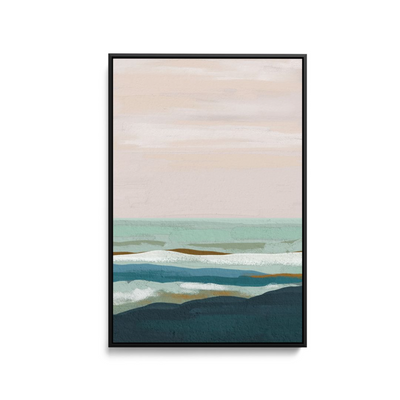Six steps to apply perfect peel and stick wallpaper
There's no doubt that peel and stick wallpaper is changing the wallpaper industry forever.
Gone are the days investing in wallpaper meant hiring a team of professionals, spending thousands of dollars and getting a look you'd have to stick with for years.
Peel and stick wallpaper can be quickly and easily applied to your walls. It's easy to DIY so there's no need for equipment or for hiring a professional!

Follow our tips below to get perfect peel and stick results:
Before you start:
As with painting, preparation is vital if you want to get good results. Don't be tempted to skip the prep - you will 100% regret it later!
> Make sure your paint isn't too new. Painted your wall and now regretting that colour and hoping to cover it with wallpaper? We've been there -- but you'll need to live with it for a very short while. If your wall has recently been painted it is important to allow a week when applying I Heart Wall Art peel and stick wallpaper as the wallpaper may not stick to a freshly painted surface.
> Pick the right wall. You're going to need a plasterboard or Gyprock-type finish to your wall - not brick, not concrete, not timber, not tile. Plasterboard is the only type of wall peel and stick wallpaper will adhere to properly. Likewise, avoid wash and wear or Teflon based paint products.
> Prep your wall. Remove any hooks and plug any holes. Lightly sand any rough patches or uneven areas. Then give the wall a wipe down with a damp cloth to remove any dust particles, which can cause air bubbles or noticeable lumps.
> Get your tools ready. You will need a ladder, a sharp Stanley knife, measuring tape, a cloth and in some cases a trusty assistant. You may also need a pin if you get any stubborn air bubbles, but we'll get to that shortly.

The six steps to apply your peel and stick wallpaper:
1. Get up on your stepladder on the top left hand side of your wall. Peel about 20cm of backing paper and crease it to flatten it.
2. Align the first panel at your desired starting point – the first panel is the most important panel, you must line it up correctly as if it is not square with the wall it will affect lining up any subsequent panels. If you don't get it right at first, just peel it off and try again.
3. Once you're happy with the position, press down on the panel applying pressure from the middle to the outside edges using firm pressure and pushing bubbles to the edge of the panel. We recommend wearing a cotton or woollen glove for this process. If you don't have one, just hold a cloth and use that to gently apply pressure.
4. It is ok to peel the panel back to release any bubbles. Your wallpaper can be repositioned several times although it may become less effective in adhering to your surface if too much dust, dirt or fibres become collected on the surface.
5. Bubbles can be easily removed by light rubbing and light pressure, pushing the air towards the outer edge. For any leftover after you've done this, use a pin to release the trapped air then gently press down the area to flatten.
6. Finally use a sharp blade to trim any excess from the base and sides of the wall, make sure you use a new blade.



Leave a comment